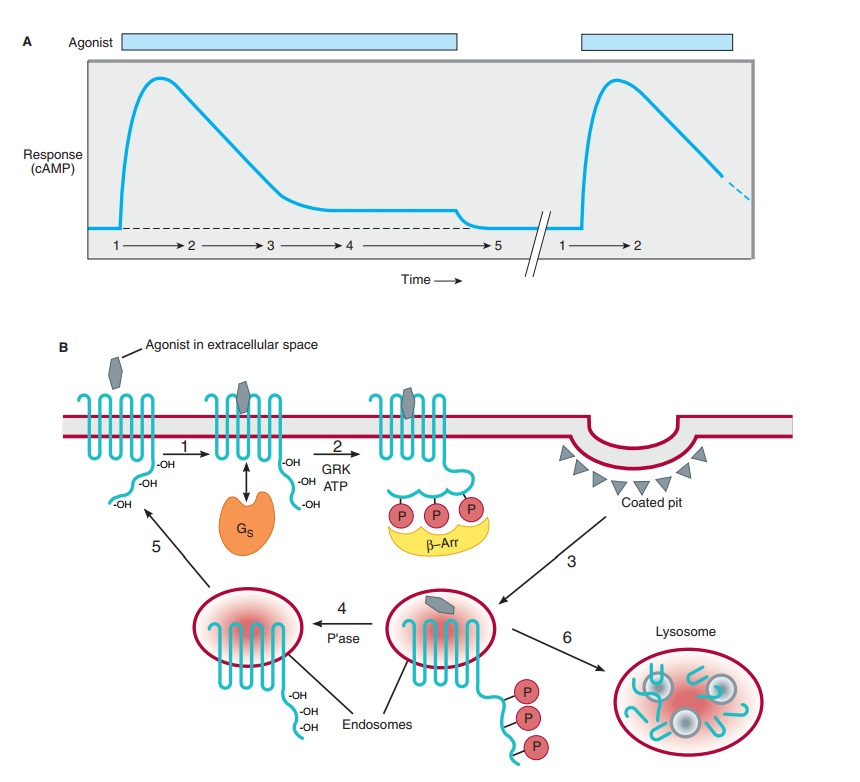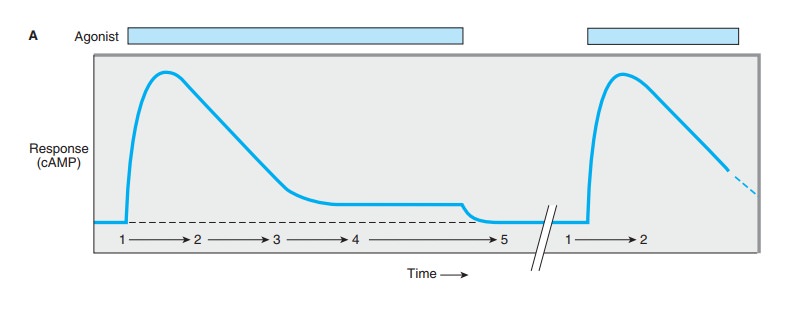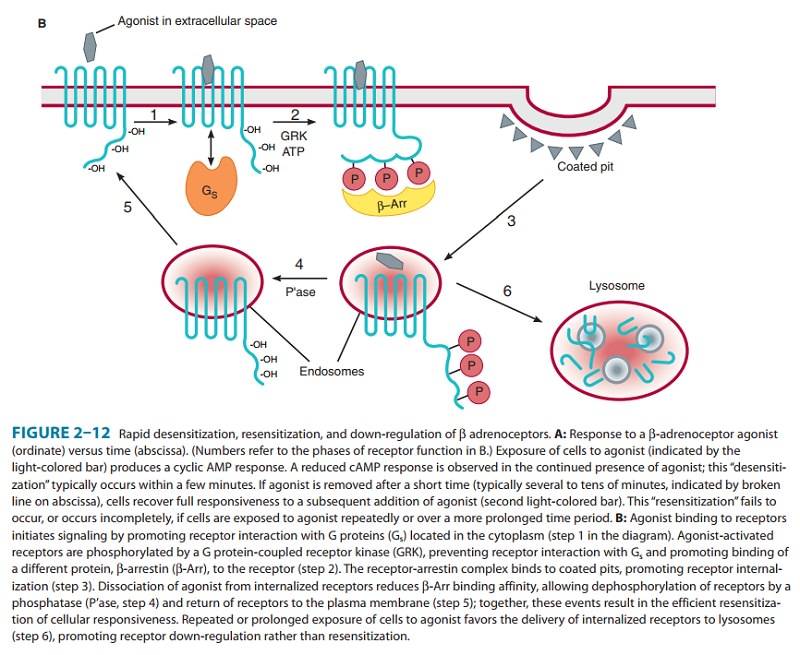Chapter: Basic & Clinical Pharmacology : Drug Receptors & Pharmacodynamics
Receptor Regulation

Receptor Regulation
G
protein-mediated responses to drugs and hormonal agonists often attenuate with
time (Figure 2–12, top). After reaching an initial high level, the response
(eg, cellular cAMP accumulation, Na+ influx,
contractility, etc) diminishes over seconds or minutes, even in the continued
presence of the agonist. This “desensitization”
is often rapidly reversible; a second exposure to agonist, if provided a few
minutes after termination of the first exposure, results in a response similar
to the initial response.
Many
GPCRs are regulated by phosphorylation, as illustrated by rapid desensitization
of the β
adrenoceptor. The agonist-induced change in conformation of the receptor causes
it to bind, activate, and serve as a substrate for a family of specific
receptor kinases, called G protein-coupled receptor kinases (GRKs). The
activated GRK then phosphorylates serine residues in the receptor’s carboxyl
terminal tail (Figure 2-12, panel B). The presence of phosphoser-ines increases
the receptor’s affinity for binding a third protein, β-arrestin. Binding of β-arrestin to cytoplasmic loops of the
recep-tor diminishes the receptor’s ability to interact with Gs,
thereby reducing the agonist response (ie, stimulation of adenylyl cyclase).
Upon removal of agonist, GRK activation is terminated, and the desensitization
process can be reversed by cellular phosphatases. For β adrenoceptors, and many other GPCRs, β-arrestin bind-ing
also accelerates endocytosis of receptors from the plasma membrane. Endocytosis
of receptors promotes their dephosphory-lation by a receptor phosphatase that
is present at high concentra-tion on endosome membranes, and receptors then
return to the plasma membrane. This helps explain the ability of cells to
recover receptor-mediated signaling responsiveness very efficiently after
agonist-induced desensitization. Several GPCRs—includingβ adrenoceptors if persistently activated—instead traffic to lyso
somes after endocytosis and are degraded. This process effectively attenuates
(rather than restores) cellular responsiveness, similar to the process of
down-regulation described above for the epidermal growth factor receptor. Thus,
depending on the particular receptor and duration of activation, endocytosis
can contribute to either rapid recovery or prolonged attenuation of cellular
responsiveness(Figure 2–12).


Related Topics